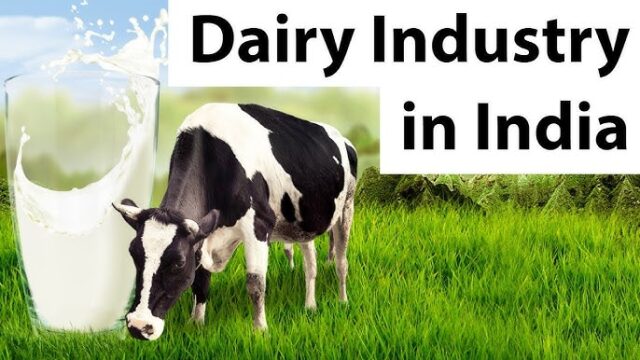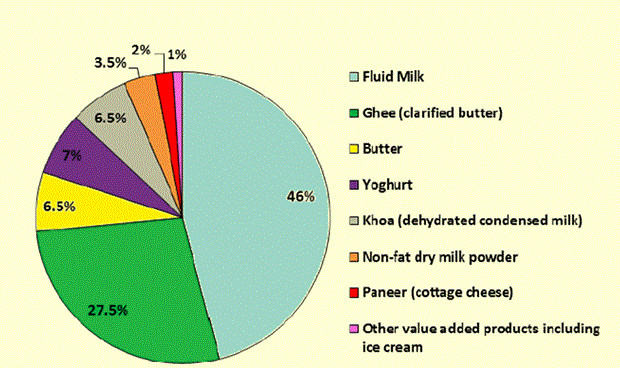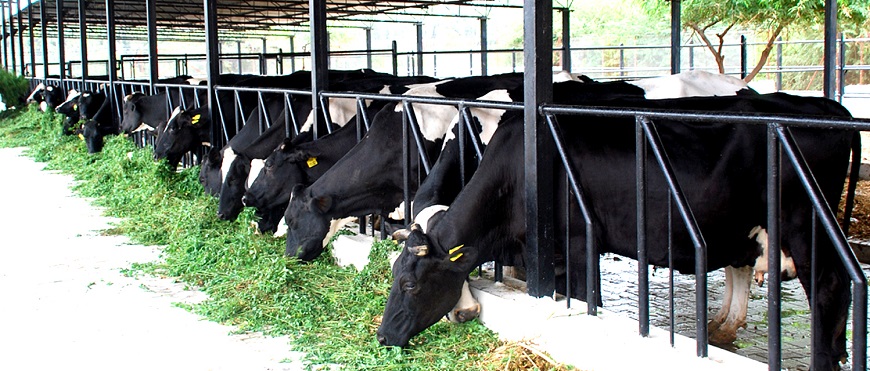
Future of Dairy Industry in India: Opportunities and challenges
India possesses the world’s largest livestock population, with 537 million animals, positioning it as a leading player in milk production and dairy farming. Dairy farming, an essential complement to agriculture, not only generates employment but also enhances family nutrition and offers a stable income for many among the rural and urban poor. The country’s daily milk consumption per person rose from 107 grams to 427 grams in 2020-21, exceeding the global average of 322 grams per person in 2021. As one of the world’s top milk producers, India has seen substantial growth in dairy production, processing, and consumption in recent decades. Further, this industry is set for transformative growth driven by technological innovations, shifting consumer preferences, and government initiatives focused on productivity and sustainability improvements.
OPPORTUNITIES IN DAIRY INDUSTRY
India is the largest milk producer globally, accounting for about 25% of the global milk production. The milk production of India has increased 58 percent in last nine years i.e. from the year 2014-15 and 2022-23. India produced approximately 230.58 million metric tons of milk in 2022-23. This remarkable achievement is largely attributed to cooperative models, such as the Amul model, which empowers farmers through collective marketing and processing. Here are some strategic opportunities for growth and innovation in India’s dairy industry:-
Rising Demand of Value Added Products

India’s growing population and increasing urbanization are leading to heightened demand for dairy products. The shift in dietary preferences, especially among urban consumers, is driving the consumption of value-added products like cheese, butter, and yogurt. As health consciousness rises, the demand for organic and functional dairy products is also expected to grow.
Technology for Enhancing Productivity
The integration of technology in the dairy sector is set to revolutionize production and distribution. Innovations such as artificial intelligence, block chain and Internet of Things (IoT) are enhancing productivity and traceability. For instance, AI-driven analytics can help farmers monitor the health of their cattle, while block chain technology can ensure transparency in the supply chain.
Infrastructure Development
The Indian government has launched several programs to boost the dairy industry, including the National Dairy Plan (NDP) and the Dairy Processing and Infrastructure Development Fund (DIDF). These initiatives will enhance milk production, improve processing facilities, and promote cooperatives, thereby will increase farmer incomes and ensure a steady supply of quality dairy products.
Export Potential
India’s dairy export potential is significant, particularly for products like milk powder, ghee, and cheese. With the global dairy market expanding, Indian producers can capitalize on this opportunity. The government’s efforts to improve quality standards and certifications will be crucial in accessing international markets.
Despite the growth of dairy sector, the industry faces challenges, including inadequate infrastructure, fluctuating prices, and increasing competition from imported dairy products.
CHALLENGES FACING THE DAIRY INDUSTRY
Infrastructure Deficiencies
Despite progress, the dairy sectors are still facing infrastructural challenges. There are significant post-harvest losses because of inadequate transportation and storage facilities. Investment in cold chain logistics and processing units is essential for reducing wastage and improving product quality.
Climate Change
The impact of climate change poses a serious threat to dairy farming. Extreme weather conditions can affect cattle health, milk production, and feed availability. Sustainable farming practices and climate-resilient breeds will be critical to mitigating these effects.
Price unpredictability
Factors such as changing demand, international competition, and feed costs contribute to this volatility. Dairy farmers are facing income instability due to fluctuating milk prices. Establishing a more predictable pricing mechanism can help stabilize farmer incomes.
Quality Control
As the dairy market grows, maintaining quality becomes paramount. Issues related to adulteration and food safety can undermine consumer confidence. Stringent quality control measures and regular inspections are essential to ensure safe and hygienic dairy products.
MITIGATION OF CHALLENGES
Cooperative models
Cooperatives have played a pivotal role in the success of the dairy sector in India. By providing farmers with access to markets, credit, and training, cooperatives empower rural communities and enhance productivity. The cooperative model encourages collective bargaining, ensuring better prices for farmers and fostering a sense of community. Looking ahead, expanding the cooperative model can help in addressing issues related to scale and efficiency. Cooperatives can also facilitate access to new technologies and training, enabling farmers to adopt modern practices.
Sustainable practices
The future of the dairy industry must prioritize sustainability. Increasing production should not come at the cost of environmental degradation. Implementing sustainable practices, such as integrated farming systems and organic dairy farming, can minimize the ecological footprint. Moreover, enhancing water management and reducing greenhouse gas emissions from dairy farms will be vital in addressing climate change challenges. Encouraging agro ecological practices can help create a more sustainable dairy sector.
Innovation in Product Development
Changing consumer preferences are reshaping the dairy landscape in India. Health-conscious consumers are increasingly seeking functional dairy products that offer health benefits, such as probiotics and fortified milk. Additionally, the demand for organic and natural products is on the rise, prompting producers to adapt their offerings accordingly. The increasing popularity of plant-based alternatives poses both a challenge and an opportunity for the dairy sector. Traditional dairy producers can innovate by diversifying their product lines to include lactose-free, low-fat, and plant-based options, catering to a broader audience.
The future of the dairy industry will likely see an increase in innovation and diversification. Companies will focus on developing new products that cater to changing consumer preferences. For instance, the introduction of dairy snacks, flavored yogurts, and ready-to-drink milk products can attract younger consumers.
Supply Chain Management
Investing in robust supply chain management systems will be essential for efficiency and cost reduction. By leveraging technology, dairy businesses can optimize logistics, reduce wastage, and ensure timely delivery of fresh products to consumers.
Research and Development
To stay competitive, the dairy industry must invest in research and development. This includes breeding programs for high-yielding and disease-resistant cattle, as well as developing sustainable farming practices. Collaborative efforts between government, academia, and industry can drive innovation.
Education and Training
Training programs for farmers on best practices in dairy management, animal husbandry, and financial literacy will empower them to improve productivity and profitability. Enhancing the skill set of dairy farmers will be crucial for the sector’s growth.
CONCLUSION
The future of the dairy industry in India is filled with potential, driven by rising demand, technological advancements, and supportive government initiatives. However, addressing the challenges of infrastructure, climate change, and quality control will be crucial for sustainable growth. By embracing innovation and focusing on sustainability, the dairy sector can continue to thrive, ensuring food security and enhancing the livelihoods of millions of farmers across the country. The collective efforts of all stakeholders (farmers, cooperatives, government, and consumers) will determine the trajectory of this vital industry in the years to come.


Indu Panchal, Sharanagouda B. Sumit Mahajan and Aman Nain
College of Dairy Science and Technology, Lala Lajpat Rai University of Veterinary and Animal Sciences, Hisar

















